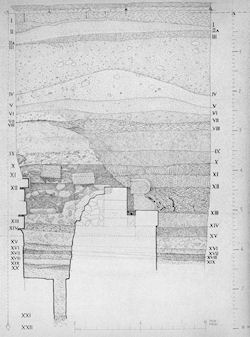
Figure 39: Stratigraphic section of the 1959 soundings (Gjerstad 1962, tab. 3)
The 1959 campaign, the first systematic excavation at S. Omobono, was launched to supplement and contextualise the fragmentary evidence unearthed in the rescue work of 1937-1938. The stratigraphic sounding, conducted by Gjerstad between February and May, revealed a complex stratification encompassing seven major phases of development near the apse of the modern church, in the area of the Archaic temple. The section described in the report, which ran east-west, was divided into three vertical subsections (A, B, and C) reflecting the levels reached by the excavation in different parts of the sounding (Figure 39).

Figure 39: Stratigraphic section of the 1959 soundings (Gjerstad 1962, tab. 3)
The earliest archaeological layers (18-20A) were characterised by a very limited assemblage, which included several ceramic sherds (mostly impasto), a grinding stone, and a single fragment of wattle and daub; all three layers were found to contain abundant charred remains. On the basis of the ceramic evidence, this earliest phase of human activity was attributed to the end of the 7th and early 6th centuries BCE. The second group of deposits (layers 17A and 19C), distinguished on the basis of the compacted nature of the layers, also contained a limited assemblage consisting primarily of impasto sherds and some charred remains. This phase was dated to the years immediately following the earliest documented activity on the site (first quarter of the 6th century BCE). Layers belonging to the third phase (15-16A and 16-18C) were characterised by a larger and more varied assemblage, including a greater number of ceramic types as well as a fragment of grinding stone and several types of terracotta roof tiles. On the basis of the ceramic evidence, this phase was attributed to the last quarter of the 6th century BCE; these first three phases were not associated with in situ structural remains. /p>
The following phase, represented by three layers (13-14A and 15C), was characterised by a substantial number of sherds of bucchero and coarse wares and by several fragments of terracotta roof tiles; layer 14A also yielded a burnt fragment of a loom weight with an incised letter. Layers 13 and 14A were interpreted as fills. Layer 15C, on the other hand, abutted the outer face of the podium of the first phase of the Archaic temple and was covered by the foundations of the second phase of the structure. On the basis of this evidence, the first phase of monumental building in the area was dated to the beginning of the 5th century BCE.
The fifth group of deposits, which encompassed a substantial reconstruction of the Archaic temple, included two layers, one on the exterior of the reconstructed podium (14C) and the other deposited as fill within it (12A). The assemblage from this phase (predominantly bucchero and numerous fragments of roof tiles) was assigned to the early 4th century BCE, making the reconstruction of the temple coincide with the date of a restoration of the area recorded in the literary sources. Gjerstad's late date for both phases of the earliest temple building, which was part of the scholar's controversial chronological scheme for Archaic Rome (Gjerstad 1966, 552-68), was immediately disputed (see, for instance, the critique in Peroni 1962, published in the same volume as Gjerstad's original report).
The following phase was characterised by a general reorganisation and levelling of the area after the temple was destroyed by a fire. Three types of fills were documented, for a cumulative thickness of 4.40m. Layers 11 and 10A consisted of heavily burnt debris, including roof tiles, tufo fragments, and only a few ceramic sherds. Above these was a mass of compacted clay (tentatively interpreted as the remains of the mudbrick walls of the destroyed temple) divided into two layers; 9A, which contained only a few fragments of roof tiles, and 13C, which yielded a vast and diverse assemblage of pottery and architectural terracottas, taken as evidence of a votive deposit. The last type of fill consisted of nondescript deposits (layers 4-8A, B, and C and 9-12C) containing a substantial assemblage of ceramic sherds, some roof tiles, and a few miscellaneous items in secondary deposition datable from the Middle Bronze Age to the Archaic period. These fills were covered by a single compacted layer interpreted as a preparation surface for a pavement of tufo slabs (3A, B, and C), which yielded only a few ceramic sherds, some roof tiles, and numerous tufo fragments. Although the materials associated with this phase were dated to before the 3rd century BCE, the destruction of the temples was assigned to 213 BCE and the fills, preparation layer, and pavement to the following year based on literary accounts concerning the destruction of the area by fire in the late 3rd century BCE.
Finally, the seventh phase consisted of two layers (1-2A, B, and C) covered by a pavement of tufo slabs. Layer 2, which contained only a few ceramic sherds and other isolated artefacts, was interpreted as a levelling deposit, while layer 1, characterised by a more substantial ceramic assemblage, a few fragments of roof tiles, and a nondescript iron fragment, was identified as a preparation surface for the first pavement of the large platform supporting the twin temples. In anticipation of a more extensive stratigraphic investigation of this part of the sequence in other areas of the site, no date was suggested for this final phase.
© Internet Archaeology/Author(s)
University of York legal statements | Terms and Conditions
| File last updated: Mon Mar 12 2012